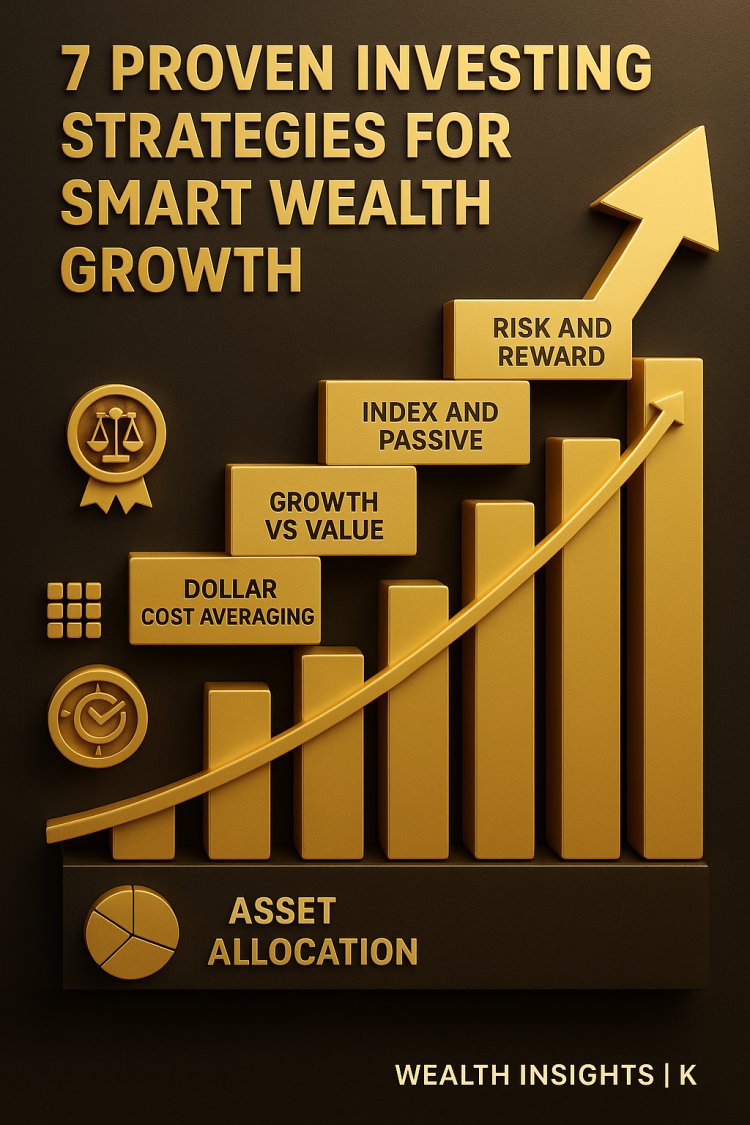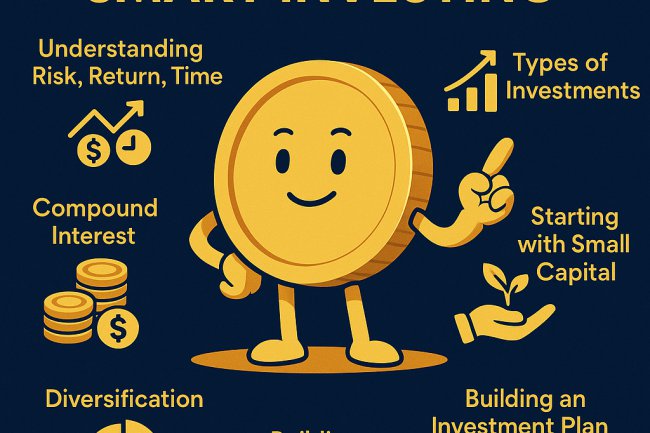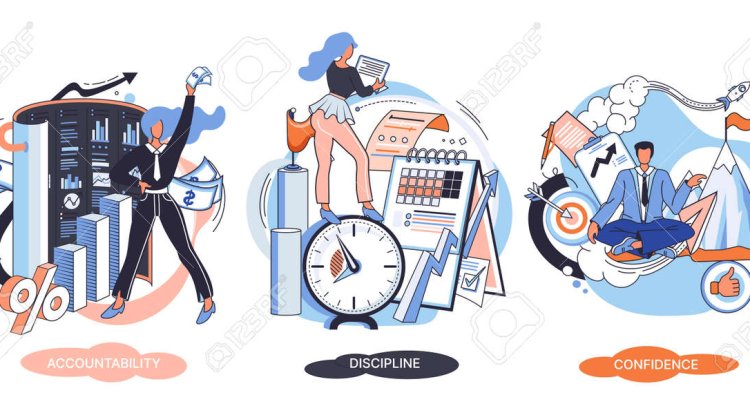Investing Strategies: How to Grow Money Smartly and Securely
Learn powerful investing strategies for long-term wealth in Kenya and Africa. Explore diversification, dollar-cost averaging, passive investing, and practical local opportunities through SACCOs, money-market funds, and the NSE.

In today’s economy, saving alone isn’t enough. Prices rise, currencies fluctuate, and inflation quietly eats away at your purchasing power. To truly build wealth, you need your money to work for you — and that means learning how to invest wisely.
Investing isn’t about gambling or luck. It’s about strategy, patience, and education. It’s understanding where to place your resources so they multiply instead of depreciate. And the truth is, anyone — from a small business owner in Nairobi to a teacher in Lagos — can start building wealth through disciplined investing.
This guide walks you through everything you need to know about investing strategies, with a clear focus on Kenya, Nigeria, and the broader African landscape.
1. Why Investing Is No Longer Optional
For decades, saving in a bank account seemed enough. But today, interest rates rarely beat inflation. While your money sits idle, its real value declines.
Inflation in Kenya averages 6–8%, while many savings accounts offer less than 3% annual returns. That means you’re technically losing money by saving alone.
Investing solves this problem by helping your money grow faster than inflation. It’s how ordinary people build extraordinary wealth — one informed decision at a time.
Investing:
-
Builds long-term financial independence.
-
Protects against inflation and currency decline.
-
Creates new income streams beyond salary.
-
Enables you to retire or scale your business faster.
When done correctly, investing turns money into freedom.
2. Understanding the Basics of Investing
Before diving into strategies, you must understand what investing really means.
Investing is the process of committing money to assets that generate future income or appreciation.
In simple words: You trade time now for more money later.
The Three Dimensions of Every Investment
-
Risk – The chance that your investment loses value.
-
Return – The profit you expect to earn.
-
Time – How long you’re willing to hold before reaping results.
These three factors determine your investment style. Low risk often means lower returns, while higher risk can yield greater rewards — if managed properly.
The key is balance — never risking what you can’t afford to lose, but never staying so safe that your money never grows.
3. The Power of Compounding
Albert Einstein called compound interest the eighth wonder of the world. It’s when your returns start earning returns, creating exponential growth over time.
Example:
If you invest KES 10,000 at 10% annual return, you’ll have KES 25,937 after 10 years. But if you leave it for 30 years, that same KES 10,000 becomes KES 174,494 — without adding extra money.
The lesson? Start early. Even small amounts, invested consistently, turn into large sums over time.
4. Core Investing Strategies
Once you understand the basics, it’s time to choose your approach. These are proven strategies that investors worldwide — and increasingly in Africa — use to grow wealth sustainably.
Strategy 1: Asset Allocation
Asset allocation means dividing your investments among different categories — such as stocks, bonds, real estate, and cash — to balance risk and reward.
Why it matters: No single investment performs well all the time. When stocks fall, bonds may rise. When currencies weaken, property or gold may hold value.
Example allocation (moderate investor):
-
40% Stocks (NSE, tech firms, ETFs)
-
30% Bonds/Money Market Funds
-
20% Real Estate
-
10% Cash or emergency fund
A young investor with higher risk tolerance may focus more on stocks, while a retiree may lean toward safer, income-producing assets.
Strategy 2: Diversification
Diversification reduces risk by spreading investments across sectors, regions, or asset types.
Think of it as financial insurance: even if one area fails, others protect you.
Kenyan Example:
Instead of buying only Safaricom shares, diversify with KCB, BAT Kenya, or NSE ETF 25. Combine with a Britam Money Market Fund and a SACCO dividend account.
Diversification isn’t about owning many things — it’s about owning the right mix of things.
Strategy 3: Dollar-Cost Averaging (Shilling-Cost Averaging)
This strategy involves investing a fixed amount regularly, regardless of market conditions.
Example: investing KES 5,000 every month into a unit trust or Hisa app account. When prices fall, you buy more units; when prices rise, you buy fewer.
Over time, this averages your cost and smooths market volatility.
This is ideal for employees, freelancers, or anyone seeking consistency over speculation.
Strategy 4: Growth vs Value Investing
Growth investing targets companies expected to expand rapidly — like tech, renewable energy, or fintech.
Value investing looks for undervalued businesses trading below their true worth.
Both strategies work; the difference lies in your patience and risk appetite.
For instance:
-
Growth: Investing in rising fintechs or regional startups.
-
Value: Buying stable dividend payers like BAT Kenya, Equity Bank, or Absa when they dip in price.
Smart investors often blend both approaches.
Strategy 5: Income Investing
Income investing focuses on generating consistent cash flow rather than capital gains.
It’s perfect for investors who prefer stability.
Examples include:
-
Dividend-paying stocks (Co-op Bank, Safaricom)
-
Treasury bonds
-
Rental real estate
-
Money Market Funds (Zimele, CIC, Britam)
Your capital grows slowly, but your cash flow keeps coming.
Strategy 6: Index and Passive Investing
Rather than picking individual stocks, you can invest in index funds or ETFs that track the overall market.
Example: the NSE 25 ETF or global S&P 500 ETF.
These funds automatically diversify your money across many companies, giving exposure to growth without needing to manage each stock.
Passive investing is cost-efficient, diversified, and ideal for long-term investors.
5. Understanding Risk and Reward
No investment is risk-free — but not investing is the biggest risk of all.
Understanding your risk tolerance (how much loss you can handle) determines your strategy.
| Risk Level | Asset Example | Potential Return | Ideal For |
|---|---|---|---|
| Low | Money Market Fund, Treasury Bill | 8–11% | Short-term goals |
| Medium | SACCO, Bonds, Balanced Funds | 10–15% | Medium-term goals |
| High | Stocks, Real Estate, Business | 15–25%+ | Long-term goals |
Risk Management Tips
-
Never invest borrowed money in volatile assets.
-
Always keep an emergency fund (3–6 months’ expenses).
-
Review investments quarterly.
-
Diversify regionally (Kenya, Nigeria, global ETFs).
-
Stay informed about macroeconomic trends.
6. The Kenyan and African Investing Landscape
Growing Opportunities
Africa is no longer just a consumer market — it’s an emerging investor’s goldmine.
-
Kenya: Nairobi Securities Exchange offers blue-chip stability and growth potential.
-
Nigeria: Access to oil, fintech, and consumer-driven sectors.
-
South Africa: Mature markets and ETFs for regional diversification.
Accessible Platforms
Investing is easier than ever through apps and online platforms:
-
Hisa, Chumz, Bamboo, Absa App, KCB App, Safaricom Investment Co-op.
These tools let ordinary people invest from as little as KES 500 or ₦ 2,000.
Common African Challenges
-
Limited financial education
-
Unregulated “quick return” scams
-
Currency devaluation
-
Emotional investing
The solution? Continuous education, verified platforms, and a long-term perspective.
7. Building Your Personal Investing Roadmap
Here’s a 5-step framework to structure your journey.
-
Set Goals – Be clear: are you investing for a car, a business, or retirement?
-
Define Time Horizon – Short (1–3 yrs), Medium (3–10 yrs), Long (10+ yrs).
-
Assess Risk – Understand your comfort level.
-
Select Assets – Mix stocks, funds, SACCOs, property, or digital projects.
-
Automate & Review – Schedule automatic contributions; reassess yearly.
Example (Young Professional in Nairobi):
-
Income: KES 100,000 / month
-
Plan: Save 10%, Invest 15%, Budget 75%
-
Invest KES 10,000 in MMF, KES 5,000 in NSE ETF, KES 2,000 in SACCO shares.
Result: Consistent compounding, passive income, diversified safety.
8. Common Investing Mistakes
Learning from others’ errors saves you both time and money.
-
Chasing trends — Don’t buy because it’s popular. Research first.
-
Ignoring fees — Small fees compound into large costs.
-
No diversification — All eggs in one basket increases risk.
-
Lack of patience — Investing is a marathon, not a sprint.
-
Panic selling — Markets fluctuate. Don’t react emotionally.
-
Not tracking performance — Review quarterly; adjust if needed.
-
Neglecting taxes — Understand capital-gains and dividend-withholding taxes.
-
Over-borrowing to invest — Debt magnifies both gains and losses.
Avoiding these keeps your portfolio strong and sustainable.
9. How to Start Investing With Little Money
You don’t need millions. You need discipline.
Start small:
-
Open a Money Market Fund account with KES 500.
-
Buy fractional shares via Hisa App for KES 1,000.
-
Join a transparent SACCO with KES 2,000 monthly contributions.
Small beginnings compound. Ten years later, those small habits turn into six-figure returns.
10. The Mindset of a Successful Investor
The difference between good investors and great ones isn’t knowledge — it’s psychology.
Principles to Master:
-
Think long term: hold quality assets.
-
Ignore short-term noise.
-
Focus on value creation, not speculation.
-
Keep learning: the market rewards the informed.
-
Be disciplined: consistency outperforms intensity.
Remember: wealth is not built in days; it’s built by daily decisions.
11. Protecting and Reinvesting
Smart investors know how to protect and reinvest their gains.
-
Protect capital: Use insurance, avoid excessive risk.
-
Reinvest profits: Compound growth accelerates wealth.
-
Diversify income: Turn profits into new assets or ventures.
-
Maintain liquidity: Keep some cash accessible for opportunities.
Example: Profits from NSE dividends can be reinvested into MMFs or ETFs instead of being spent.
12. Case Study: The 10-Year Investor
David, a Kenyan software engineer, started investing KES 10,000 monthly in a Money Market Fund and later added NSE stocks.
-
Year 1–2: Built emergency fund, learned markets.
-
Year 3–5: Added stocks, small business profits.
-
Year 6–10: Portfolio grew to KES 2.3 million, passive income KES 18,000 monthly.
His secret? Consistency, reinvestment, and refusing to panic during market dips.
That’s the power of strategy over emotion.
13. Investing and Technology
Technology has made investing accessible, transparent, and affordable.
Use apps to:
-
Track portfolio performance (Absa, Hisa, Zimele).
-
Learn through tutorials.
-
Automate deposits.
-
Diversify internationally (Bamboo App → US stocks).
Tech eliminates excuses — today, the investor’s office fits in their phone.
14. The Path Ahead
The world is shifting from employees to investors — from consumers to owners.
Financially educated Africans who master investing today will shape the continent’s economic future tomorrow.
Whether your first investment is KES 500 or KES 50,000, the goal is the same: build assets that create freedom, stability, and legacy.
Start where you are.
Learn what you can.
Invest what you have.
Repeat for life.
Your wealth journey begins now.
— Maertin K | Wealth Insights Kenya
What's Your Reaction?




















